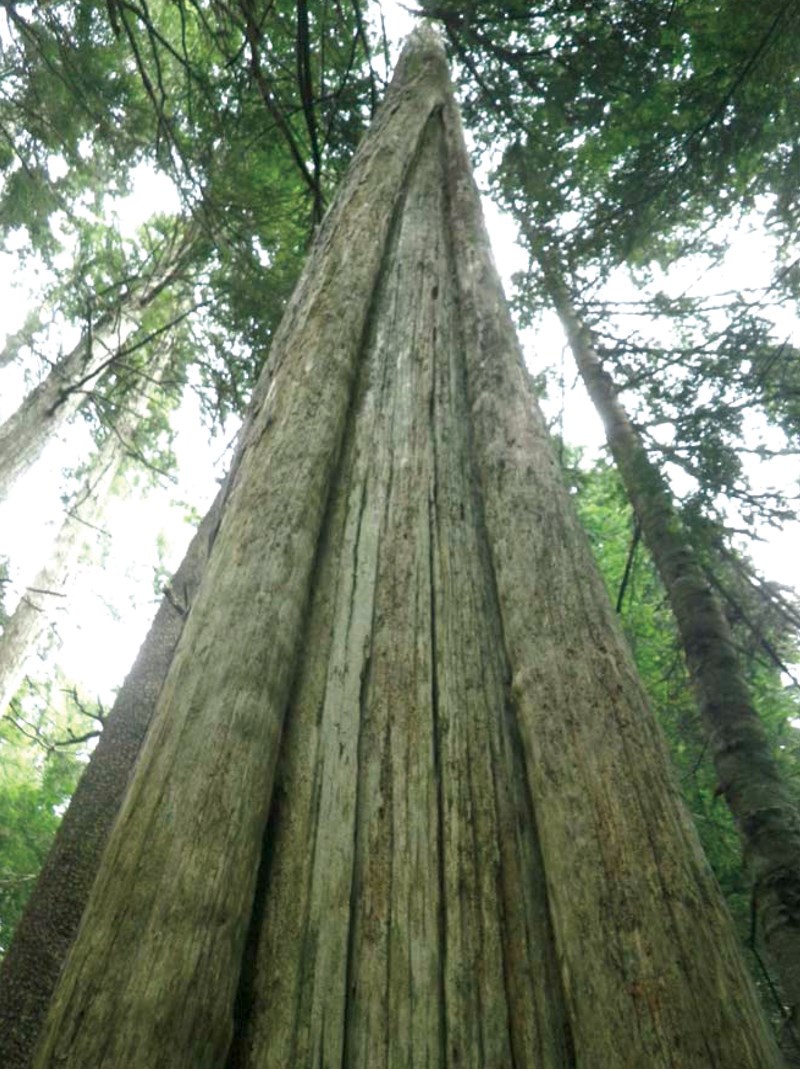BC Timber Sales (BCTS) plans to proceed with advertising the Trailfest Wagonroad and Dakota Bowl cutblocks this summer, despite an archeologist’s report identifying 33 suspected culturally modified trees (CMTs) in the Dakota Bowl block, a BCTS official said Tuesday.
Senior forest planner Norm Kempe said he had not yet seen the report by archeologist Jim Stafford, who was hired by Elphinstone Logging Focus (ELF) to conduct a preliminary survey of the cutblock, but he was aware of ELF’s claims that suspected CMTs were found in the area.
“What we’re dealing with is a difference in professional opinion,” Kempe said.
Kempe said BCTS sent three “very experienced” archeologists into the Dakota Bowl block to review the area for archeological features. While they did not rule out the possible presence of CMTs, he said, “they’re saying the likelihood is very low.”
In his report to ELF, dated July 1, Stafford said his team’s brief survey of a 40-hectare portion of the cutblock “indicates that yellow cedar bark harvest features that pre-date 1846 [and thus are protected under the Heritage Conservation Act] do exist … and there is high potential for further undiscovered CMT features to exist in the general area.”
Though he called the results preliminary and acknowledged some of the trees could be naturally scarred, Stafford concluded it was “more likely that we are underestimating the use of this area and that a comprehensive assessment will continue to bring to light many more” archeological features.
“Currently, these high-elevation yellow cedar bark harvest sites have been recorded on the B.C. coast in only a few areas, thus making these sites unusually significant,” he wrote.
Kempe said he would review Stafford’s report and forward it to the province’s Archeology Branch for an opinion, but did not expect the findings would delay the cutblock sale.
“Jim Stafford is a qualified archeologist … and I have no reason to believe he is any way biased or not objective. But he believes in things that other archeologists aren’t buying into yet. It has nothing to do with me,” Kempe said.
He noted that BCTS has removed three cutblocks from its work plan after CMTs were identified, the most recent being DK045, known as the Roberts Creek headwaters ancient forest, which was taken off the plan last August.
As the Dakota Bowl cutblock lies within Squamish Nation territory, Kempe said he had informed the Band of BCTS’s negative assessment results for archeological features after ELF contacted the Band last year. The Squamish, he added, did not contest the sale of DK045 before BCTS removed it from the plan.
If CMTs are confirmed within the Dakota Bowl cutblock, Kempe said he would have the option of applying to the Archeology Branch for an alteration permit, which would allow the trees to be harvested.
Attempts would be made to save trees growing on the perimeters, he said, but retaining all the trees might not be possible. “Many of these are fairly old and decayed trees and this represents a hazard to the logging crews around there. They each have to be assessed for their safety.”
Hans Penner of ELF said the ancient yellow cedar and mountain hemlock forest in Dakota Bowl is “unique in the world,” representing “a living archive of the forest and the human use of the forest” before contact with Europeans.
“The Dakota Bowl forest is the best example of this remaining heritage forest I have seen,” he said. “This is because it was naturally protected from logging and other intrusions by surrounding steep hillsides and gullies, until now.”
Penner said Stafford’s company, Coast Interior Archeology, has “the most experienced people in the province for identifying Native use of resources,” and noted it was ELF, not BCTS, that identified the inventory of culturally modified trees in DK045.
“BCTS has not identified one CMT,” Penner said. “I’m convinced that it’s totally intentional. How could it be that they logged thousands of acres where we know the people have been for thousands of years, yet BC Timber Sales finds no evidence of Native use in those areas? That doesn’t make sense.”



